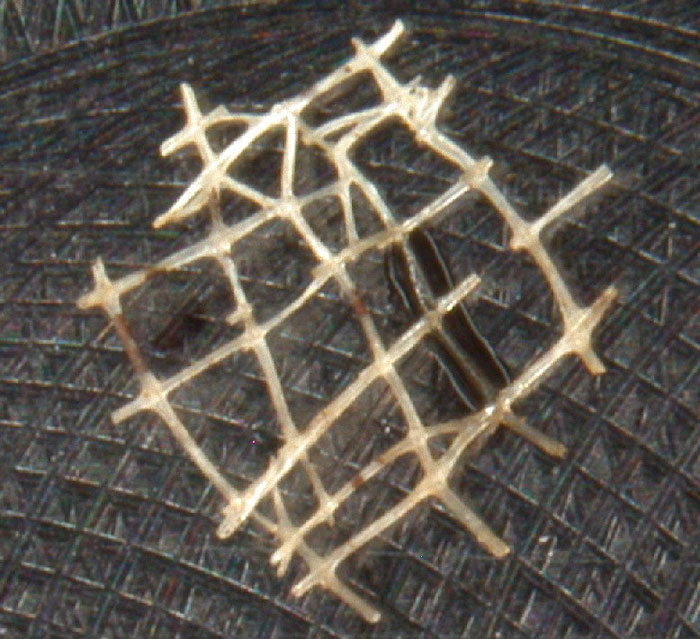Palaeontology
Last updated:27 June 2014
Palaeontology is the study of fossils and what they reveal about the history of our planet. In marine environments microfossils collected within in layers of sediment cores provide a rich source of information about the environmental history of an area.
Microfossils are fossils that generally are smaller than 4mm in length. There are a range of microfossils in marine sediments, including:
- Calcareous microfossils e.g. foraminifera, ostracods, coccoliths, pteropods
- Siliceous microfossils e.g. diatoms, radiolaria, spicules
- Organic microfossils e.g. pollen, spores, dinoflagellate cysts
Radiolaria with diatoms from near Kergeulen Island. Reproduced with permission from Macquarie University
Different organisms and species have specific distributions that are related to environmental factors such as:
- water depth
- temperature salinity
- light levels
- oxygen content
- sediment type
- food sources and
- current strength.
Mapping the occurrence and abundance of microfossil species down sediment cores collected from the ocean reveals changes in environmental conditions through time when combined with knowledge of how animals are related to the different environmental factors.
Planktonic foraminifera can be considered to be the thermometers of the oceans. Living in the near-surface layers of the ocean, these tiny calcareous animals are very particular about the temperatures they will tolerate. The association of different species of foraminifera with specific temperature ranges makes these organisms a very powerful tool for palaeoclimate reconstructions.
Calcareous organisms, such as planktonic and benthic foraminifera, are incredibly useful sources of chemical information. Analysis of the carbonate chemistry of the foraminiferal test (or shell) reveals changes in the isotopic composition of the sea water at the time the organism was growing. The carbon isotope ratio is linked to changes in biological productivity and therefore nutrient concentration. The oxygen isotope ratio tells us about past changes in temperature and global sea-level.
Knowledge about the timing of the appearance and disappearance of certain microfossils can also be used in conjunction with their distribution and abundance in cores to assign ages to the different sediments. Microfossils which are known to have occurred over a relatively short time span and are widespread, such as ammonites, are particularly useful as stratigraphic markers.
The carbonate chemistry of calcareous organisms can be useful also for aging sediment through radiometric dating. By comparing the 14C isotopes of the sample to the known natural decay rate of 14C in the atmosphere, an age for the organism, and hence the sediment layer in which it was deposited can be obtained for up to 60 000 years before present.
Geoscience Australia is using palaeontology to characterise and understand modern seabed environments. It is also used to develop an understanding of past environmental changes as context for predicting future changes to the ocean environment. Recent areas of research include:
- the history of Antarctic ice sheets and shelf communities (see also Antarctica)
- analysis of a sediment core collected beneath the Amery Ice Shelf a hundred kilometres from open water provided the first glimpse of this seabed environment and its biological community. Patterns in the diversity and ecology of biology communities (see also Surrogacy)
- investigation of the distribution of species of benthic foraminifera in surface sediments from Torres Strait revealed the range of seabed environments in the area which act to structure these benthic communities.
Analysis of the composition of surface sediments in Torres Strait provided important baseline information on sediment sources which helped to develop a better understanding of the factors influencing seagrass dieback.









